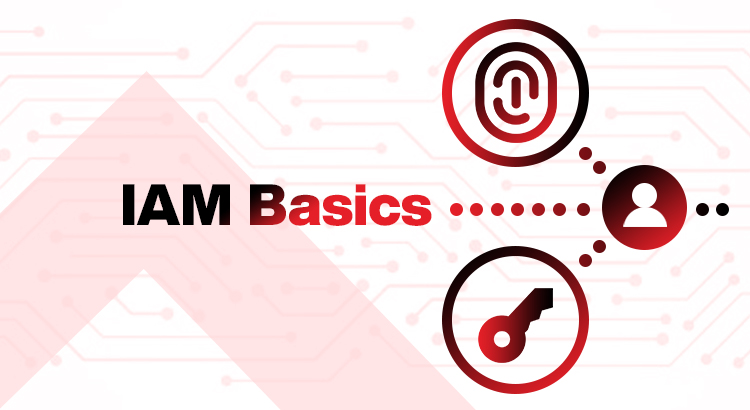Overview: Identity Fabric
Digital transformation is ubiquitous. Fundamentally, it has changed the IT paradigm. In terms of security as well. Digital transformation demands carefully architected identity management practice, which is composed of people, policies and procedures. Indeed, these identities have taken the center stage of this transformation. Identities constantly interact with applications, secrets, information of critical importance and network and infrastructure devices. So, if organizations lack the ability to manage and control the way these identities make access to critical applications, the digitalization initiatives might fail.
To make this transformation successful, organizations must build a detailed activity map and permission policies around every identity in the backend that can perform all granted entitlements and services in the IT environment- securely. Such a map in the backend forms the “Identity Fabric” that ensures all the digital services are done in a standardized manner. It works as the first brick to build the legacy building of Identity Access Management (IAM).
If we go by the allegorical terms, an identity is the distinctive or identical qualities, beliefs, or personality traits that develop or establish a standard for a person. On the contrary, digital identities in cyber terms are information used by IT systems to represent a person, machine, application, or organization itself. And building Identity Fabric enables us to seamlessly manage user and service identities (either human or non-human) in multiple layers of IT infrastructure.
Identity Fabric and Access Management
Digital identities are increasingly vulnerable to insider and third-party threats. And the sheer number of identities is ever greater. There are human identities, privileged identities, machine identities, API identities, and cloud identities in modern IT infrastructure. The identity fabric for every set of categories, use cases, and functions demands a distinct set of rules and policies for seamless and secure functions. If the security and governance of the identities are not as per the standards and policies, it could be connived by malicious insiders, compromised third-parties or organized hacktivists.
Therefore, a well-managed identity fabric provides visibility into the system and works as a key component to build authentication mechanisms regardless of IT infrastructure.
Policy-based access for every identity: Specified access policy is always crucial for identifying the genuineness of any digital identity. Access to any critical application, confidential database server, or the individual who has predefined roles and responsibilities in place determines the comprehensiveness of identity fabric. It is not how many accesses a particular identity must fulfill the requirements, but the genuineness and relevant access right that matters.
Hence, the access policy, once predefined, determines whether the identity is rightly used or misused. In a larger perspective, it prevents information misuse.
Authorization of Identities: The lifecycle of an identity depends on how the identity is established and used for different sets of IT tasks. And to do that, authorization of the identities plays a key role. It is the first critical step for mapping the overall identity fabric. Authorization mechanism ensures that the identity is –
- Accessing the right application/ system at the right time for the right purpose
- Preventing any unauthorized attempt to access any critical application
- Maintaining confidentiality of business data
- Seamlessly integrating the resources in a secure manner
- Meeting regulatory compliance mandates
Components that help to choose the right Identity Fabric
An API-based approach (Application Programming Interface) is the key behind an intense architecture of identity fabric. This is because the services related to identity need to be incorporated with the digital activities of the organization consistently. Once the process is standardized, identity fabric helps to accelerate the integration of modern technologies to a smoother user experience and stronger security posture with privacy controls. It builds the compliance posture.
Here are the components that help to choose the relevant Identity Fabric:
- Convergence: Identity Fabrics build a comprehensive approach towards the major functional areas of Identity Access Management (IAM). This niche segment of data management is integrated to ensure that the right users have the right access to the right technology resources.
- Flexibility: This is a default trait of Identity Fabrics. Considering the advanced IT infrastructure, most organizations seek flexible deployment models, and the right identity fabric offers flexibility with a comprehensive set of APIs.
- Supported identities and systems: The scope of an Identity Fabric lies beyond the workforce. Considering the proliferation of hybrid workforce, it covers all types of identities, remote users and third-party access.
Role of Digital Identity Fabrics in building business strategies
The key aspects of identity fabrics in the digital age are security, privacy, compliance and user experience. Business leaders are continuously challenged by the need for technological innovations and new business models because there are frequent changes in business partnerships, and internal policies. Digital Identities take the centerstage of this transformation. Without the ability to manage and control the access of every identity to every service, businesses will face transformational challenges. To be precise, the IT challenges on businesses related to digital identities come from multiple areas including demand of –
- Compliance standards
- Data privacy from consumers
- Smart analytics of activities
- Flexibility of the functions and access patterns
- Ability to customize requirements as per demands
Conclusion
Digital transformation is inevitable, and the challenges related to this transformation are unavoidable. Choosing the right identity fabric helps to build the foundation of secure IT infrastructure without compromising the daily IT operational tasks and overall business continuity.

